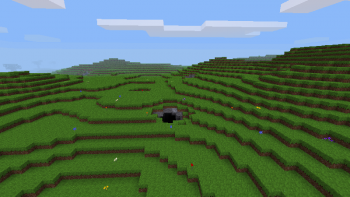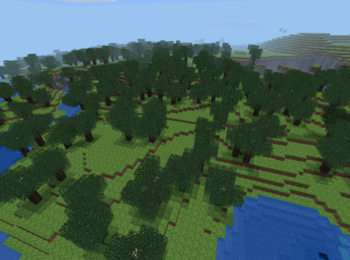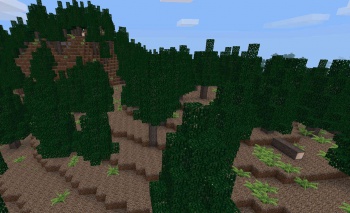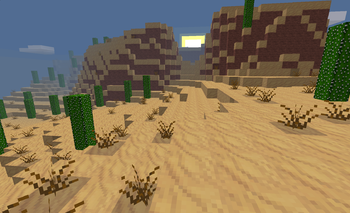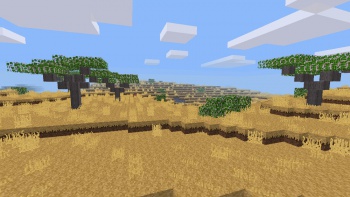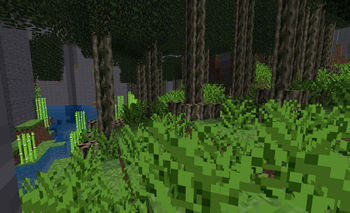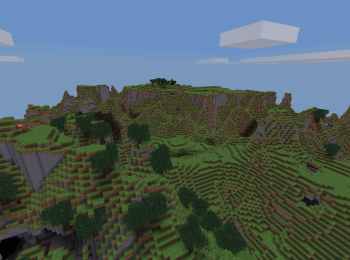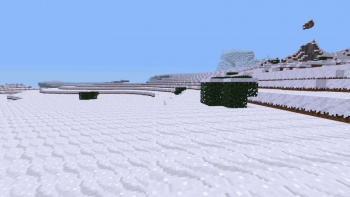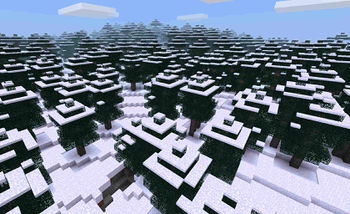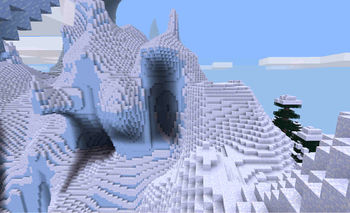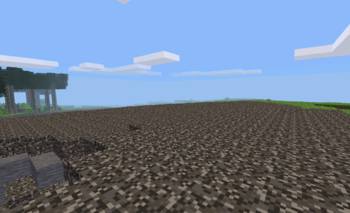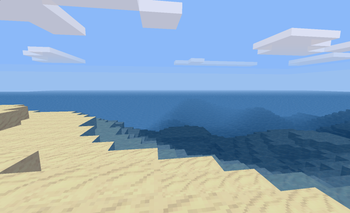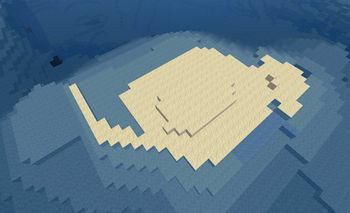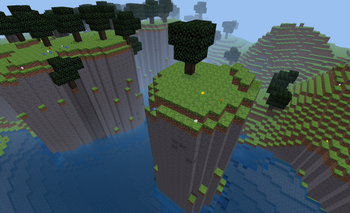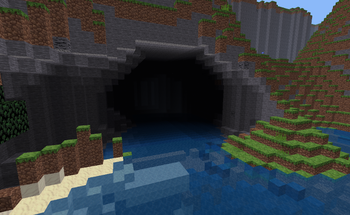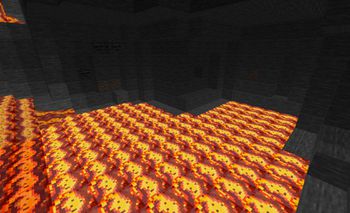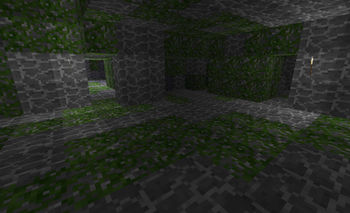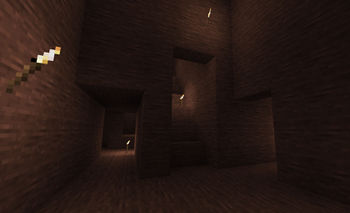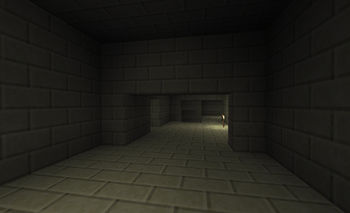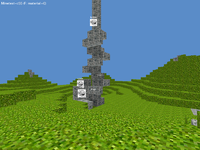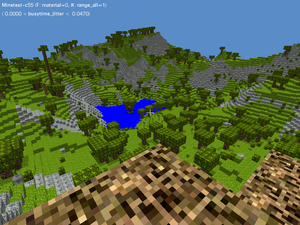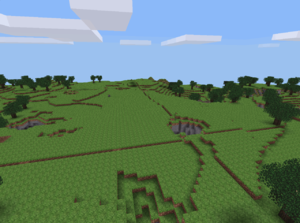Difference between revisions of "Biomes/de"
< Biomes
Jump to navigation
Jump to search
| Line 49: | Line 49: | ||
| '''Bergbiom'''<br/>[[Trees/de|Baum und Apfelbaum]], [[Dirt with Grass/de|Erde mit Gras]], [[Dirt/de|Erde]], [[Stone/de|Stein]] | | '''Bergbiom'''<br/>[[Trees/de|Baum und Apfelbaum]], [[Dirt with Grass/de|Erde mit Gras]], [[Dirt/de|Erde]], [[Stone/de|Stein]] | ||
| v6 | | v6 | ||
| − | | | + | | Gebirge sind am schwersten zu erklimmen. Hier kommen in der Natur Bäume und Apfelbäume vor. Sie können im Bergbiom sehr leicht sterben, falls Sie unvorsichtig sind, wohin sie treten. |
| − | | [[File:Mountain.png|thumb|350px| | + | | [[File:Mountain.png|thumb|350px|Bergbiom vor 0.4.7]] |
|- | |- | ||
Revision as of 10:58, 4 March 2018
| English • Deutsch • français • Bahasa Indonesia • 日本語 • Bahasa Melayu |
Gemäß Wikipedia sind Biome als Gebiete der Erde mit klimatisch und geografisch ähnlichen Bedingungen definiert, wie Lebensräume von Pflanzen, Tieren und Bodenorganismen. Dies wird oft auch als Ökosystem bezeichnet.
Biome
| Name und Eigenschaften | Kartengenerator | Beschreibung | Bilder |
|---|---|---|---|
| Flachland Blumen, Gras, Erde mit Gras, Erde, Stein, Sandstein |
v5, v6, v7 | Ebenen haben eine große Anzahl von Erde- und Grasblöcken auf denen (seit Version 0.4.7) Blumen und Gras wachsen können. Der Untergrund besteht entweder aus Stein or Sandstein. | |
| Laubwald Bäume und Apfelbaum, Erde mit Gras, Erde, Stein |
v5, v6, v7 | Sommergrüne Wälder sind die häufigsten Biome in den Temperaturzonen von Minetest. Bäume und Apfelbäume verbreiten sich hier auf natürliche Weise. Im Allgemeinen können in Wäldern Seen, Tümpel und Flüsse vorkommen. Normalerweise umgeben sommergrüne Wälder Ebenen. | |
| Nadelwald Kiefern, Blumen, Gras, Fliegenpilz, Brauner Pilz, Erde mit Gras, Erde, Stein |
v5, v7 | Nadelwälder wachsen in kälteren Gegenden und bestehen aus Kiefern. Kieferwälder können in kalten Regionen mit Schnee bedeckt sein. | |
| Wüste Wüstenstein, Wüstensand, Kaktus, vertrockneter Strauch |
v5, v6, v7 | Eingeführt in 0.4.dev-2012040 dev snapshot, können Wüsten eine große Zahl von Wüstensand und Wüstenstein enthalten. Kakteen und vertrocknete Sträucher verbreiten sich hier auf natürliche Weise in Gruppen auf Wüstensand. Unter Wüsten entstehen unterirdische Flüsse und Seen, die über 200 Blöcke tief sein können. | |
| Savanne trockenes Gras, Akazie, Erde mit vertrocknetem Gras, Erde |
v5, v7 | Die Savanne ist ein trockenes Land, aber keine Wüste. Sie wird von Akazienbäumen und trockenem Gras besiedelt. | |
| Dschungel Dschungelgras, Dschungelbaum, Erde mit Gras, Erde, Stein |
v5, v6, v7 | Dschungel enthält große Bäume, die dick aneinandergepackt wachsen. Dschungelgras und Dschungelbäume tragen hier natürlich vorkommendes Dschungellaub. In früheren Versionen des Entwicklungszweigs 0.4 waren Dschungel standardmäßig deaktiviert und mussten durch Hinzufügen von “v6_jungles” zur Variable mg_flags in der minetest.conf aktiviert werden, aber seit 0.4.10 sind Dschungel wieder standardmäßig aktiviert.
|
|
| Bergbiom Baum und Apfelbaum, Erde mit Gras, Erde, Stein |
v6 | Gebirge sind am schwersten zu erklimmen. Hier kommen in der Natur Bäume und Apfelbäume vor. Sie können im Bergbiom sehr leicht sterben, falls Sie unvorsichtig sind, wohin sie treten. | |
| Schneebiom Snow, Snow Block, Dirt with Snow, Dirt, Pine Tree, Dry Shrub, Stone |
v5, v6 ,v7 | Snow biomes are areas covered by snow. They are sometimes populated with pine tree forsts. | |
| Gletscher Snow Block, Ice |
v5, v7 | Glaciers form only in the coldest regions and are made of large amounts of ice, covered by a layer of snow blocks. Glacier biomes can be either mountain-like as in the screenshot or very flat. Glaciers can also border large parts of oceans. Because of the extreme conditions, no vegetation can be found here. | |
| Grawehlbiom (Kiesbiom) Gravel, Stone |
v6 | Very rarely, notably large areas of gravel can appear at surface level. These areas consist of nothing but gravel. |
Technische Biome (mgv6)
| Name and Features | Description | Images |
|---|---|---|
| Ocean Sand, Water |
Oceans are an unofficial biome that seemed to be implemented around 0.2.20110731_1 Pre-Alpha. This biome is just a large body of water that can be up to 250 blocks deep. Oceans are commonly referred to as lakes, but are called oceans because they can be so huge, sometimes even 200-350 blocks across. | |
| Island Sand, Water |
Not classifiable as a biome, but still frequent enough to be classified as a technical biome, islands occur many times in oceans. These could even be referred to as a sub-biome, being a product of another biome. Islands usually raise out of the ground 3-10 blocks, but can get as large as 40-80 blocks tall. | |
| Plateau Dirt, Grass Block, Stone |
A giant structure that seems to only happen in 0.4, plateaus are very common around mountain biomes. Plateaus can even float above ground and generate miniature biomes on top of it. | |
| Water caves Stone, Water |
Water caves are caves that only occur at sea level, which turn into a huge underground river or lake. These caves can lead thousands of blocks down and are extremely easily to get lost in. | |
| Lava lakes Stone, Lava, Ores |
Fairly common below -95Y, these lakes are caverns flooded with lava. Ores are extremely common around these lakes (see screenshot). However, often these caverns are not linked to, and it is very difficult to reach them. | |
| Dungeons Cobblestone, Mossy Cobblestone, Stair |
Dungeons are hollow underground structures made of Cobblestone and Mossy Cobblestone. Many pathways and cobblestone Stairs connect a complex system of rooms. In 0.4.7, dungeons are not activated by default. “dungeons” has to be added to the variable mg_flags into the minetest.conf to cause the map generator to generate dungeons.
|
|
| Desert dungeons Desert Stone, Sandstone Brick |
Desert dungeons are similar to dungeons, but they usually appear below desert biomes and have larger rooms and longer stairways. They are either made out of desert stone or sandstone brick. |
|
History
Before Minetest had version numbers, biomes were undefinable and only consisted of 4 materials: grass, stone, light and "water" (as seen below.) When 0.0.1 came out it brought actual biomes to the table, but before 0.2.20110529 Pre-Alpha map generation was a bit of a mess. Biomes would cross into each other, and were generally undefinable. So far 0.4 Dev has the most stable biome generation.
For more detail on the evolution of the map generator see the Map Generator Evolution page.
| English • Deutsch • français • Bahasa Indonesia • 日本語 • Bahasa Melayu |
